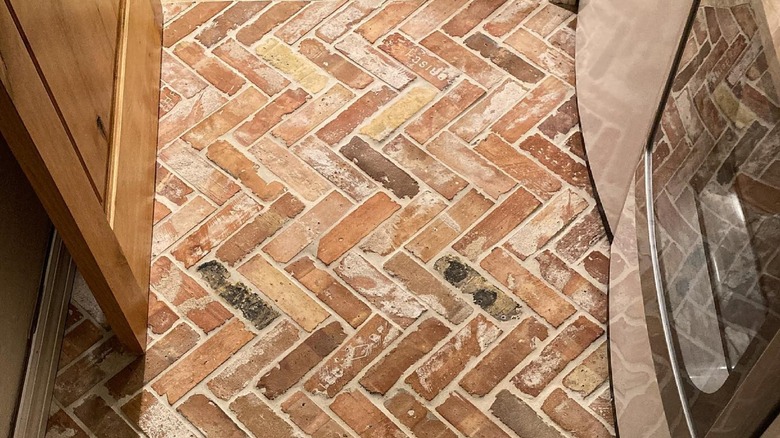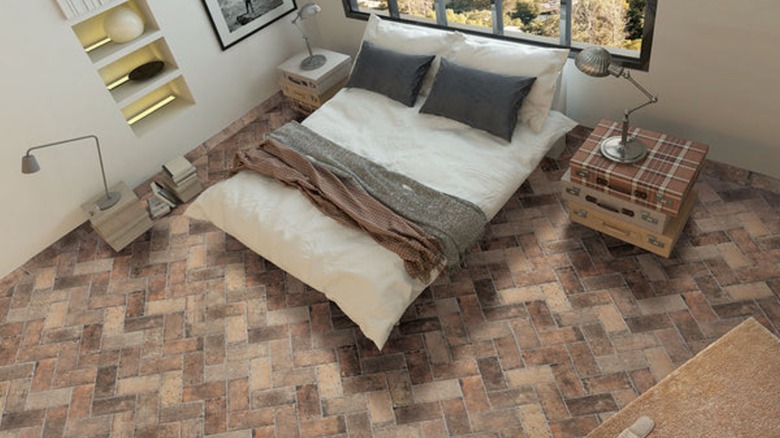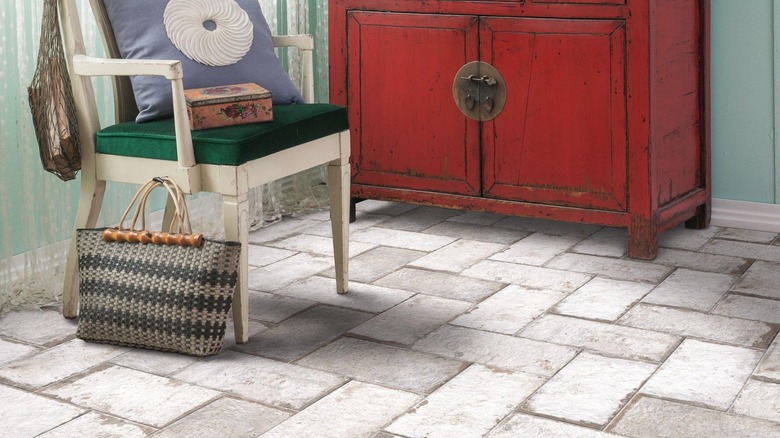Brick Tile Flooring Downsides (And A Better Alternative Solution)
Exposed brick adds character to any room, making it a stellar material for your interior design. However, when it comes to using the masonry as flooring, some people say the cons greatly outweigh the pros. These days, most brick floors are made from tiles ranging in thickness from ¼ to 1 inch, and they are heavy. Even thinner alternatives can add too much weight to be installed on anything other than a concrete slab subfloor. That's not the only potential downside to this beautiful alternative to hardwood. Brick flooring can also be difficult to clean and uncomfortable to walk on.
People have been constructing entire buildings, streets, and sidewalks out of bricks for centuries. It's obviously durable, but it does have some drawbacks because it is a porous material. If you want the rustic look of brick flooring, be prepared for the added maintenance to keep it looking its best. However, you don't have to break up with the brick look. There are alternatives that are easier to care for and will give you the same look at a similar or even less expensive price.
Things to consider about brick flooring
Brick is a very hard material and makes for a durable flooring — and even if it does chip, the distress just adds to the charm, making it a great choice for anyone embracing the ultimate rustic decor. This durability means it stands up well to heavy traffic, but it's also very porous. Consequently, if you don't seal the brick — and reseal it periodically — the flooring will be susceptible to stains and moisture. In terms of other maintenance, brick floors can be hard to clean. You'll need to avoid harsh chemicals that can damage the stone's finish or seal. Everyday dust and debris can be handled with just a sweep, vacuum, or steam mop like any other floor. However, if you want the stylish, thick grout lines that often come with brick flooring, you may find yourself struggling to keep those filler lines stain-free, especially if it's not sealed and dirt can lodge into the pores.
With the benefit of durability also comes the downside of a very hard floor underfoot. Depending on the exact tile, it may even be a bumpy, uneven surface. When you take this all into consideration, this flooring material may not be a great choice for a kitchen where you're standing for long periods and regularly making a mess or a living room where little ones are playing around. The good news is that you can get the same authentic, rustic style without the disadvantages by using brick-look tile.
Brick-look ceramic tile is a better choice
For materials alone, brick flooring can cost somewhere between $3 and $10 per square foot, while installation can tack on another $5 to $10 per square foot. Brick is a more expensive floor choice than laminate or vinyl, but it is in line price-wise with ceramic tile. So, depending on how extravagant your taste is, you may be able to keep the cost roughly the same or less using ceramic tiles instead of real brick. And there is a seemingly endless number of styles to choose from.
Whether you want whitewashed brick or a deep red stain, there is probably a tile design that suits your fancy. Plus, these alternatives don't require sealing and resealing. Ceramic tile is impervious to moisture, which is why it's so popular in bathrooms. Porcelain tiles, which are just a type of ceramic, are even more durable than regular ceramic, making them a better option for high-traffic areas. Further, they can represent a significant cost savings over real brick. Still, some people want the charm that real brick brings to a space and we can't blame you. So, if you're not scared off by the downsides, you can at least save a few dollars on installation by DIYing a brick floor in your home.


